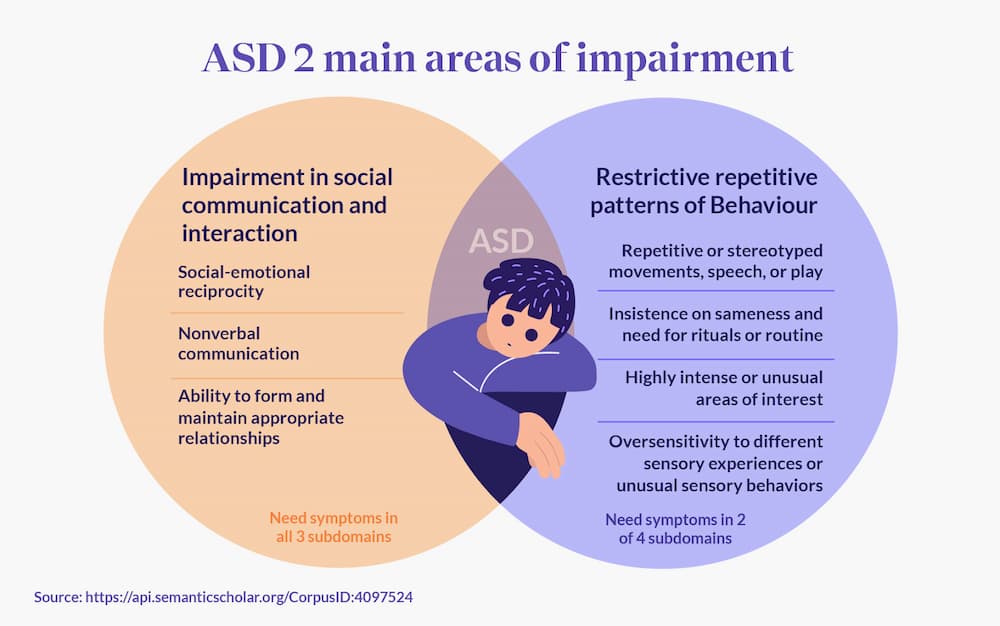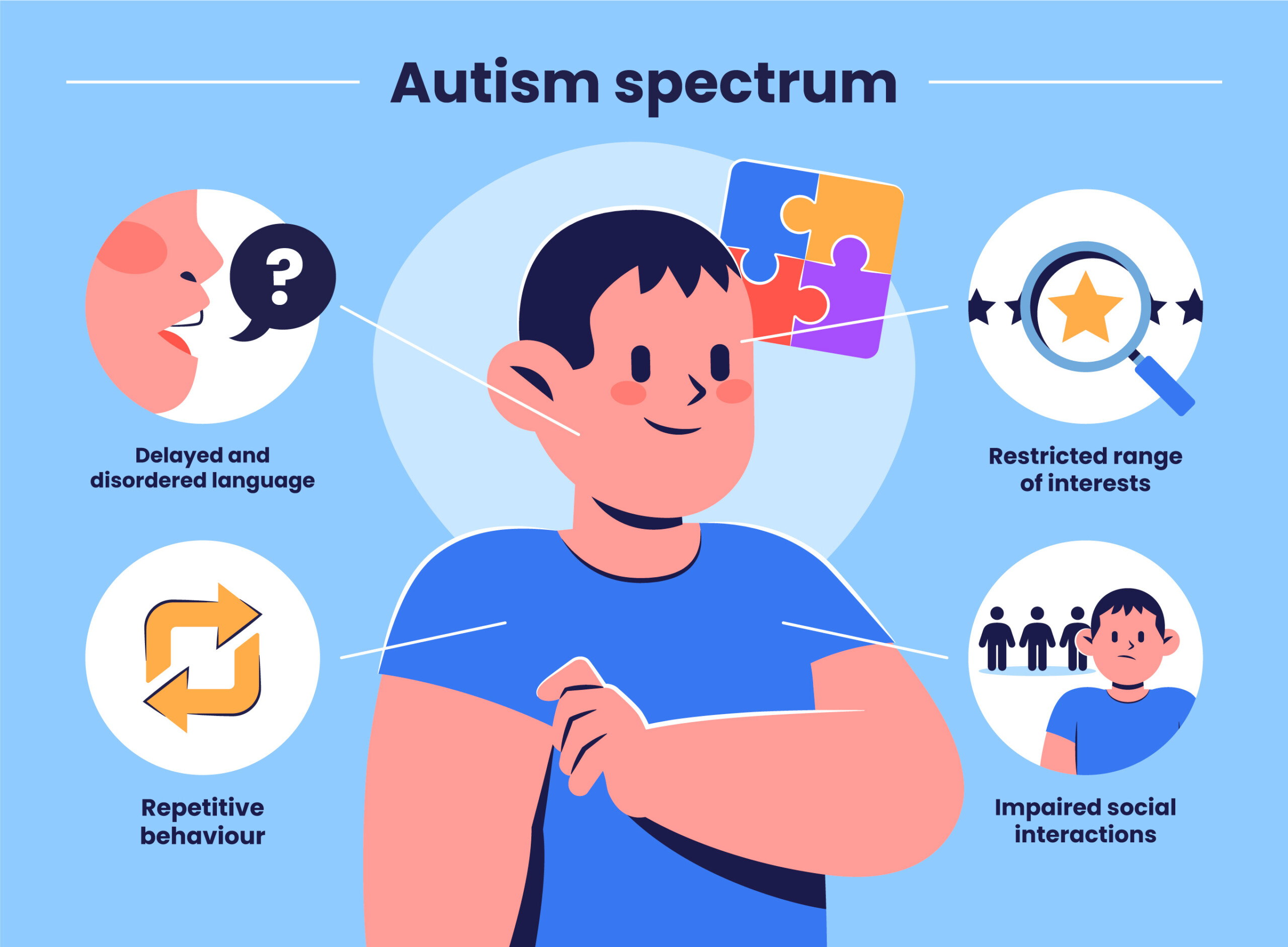How an Autism Therapist can improve your day-to-day structure for those living with autism
How an Autism Therapist can improve your day-to-day structure for those living with autism
Blog Article
Understanding the Effect of Behavioral Autism on Day-to-day Live and Social Communications
You could not understand exactly how deeply behavioral autism impacts daily life and social communications. Individuals on the spectrum frequently navigate a globe filled up with communication hurdles and sensory overload. These obstacles can lead to stress and seclusion, impacting their connections and overall well-being.
Specifying Behavioral Autism and Its Characteristics
Behavior autism, commonly referred to as autism spectrum condition (ASD), encompasses a variety of conditions characterized by challenges in social communication, interaction, and recurring habits. You might see that individuals with ASD commonly struggle to analyze social hints, which can lead to misconceptions in conversations. They might find it difficult to establish eye call or participate in little talk, making social situations feel frustrating.
Communication problems can materialize in numerous means, from postponed speech advancement to a preference for utilizing less words. By identifying these traits, you can foster an atmosphere that promotes acceptance and encourages efficient communication, assisting individuals with autism grow in their daily interactions.
The Spectrum of Autism: Understanding Variability in Habits
Autism range disorder (ASD) isn't a one-size-fits-all medical diagnosis; it varies extensively among individuals. You could see that some people with ASD display light signs and symptoms, while others may face more significant difficulties. This variability can manifest in behaviors, passions, and sensory level of sensitivities. You might run into individuals that are extremely verbal and involve conveniently in discussions, while others may favor solitary activities or interact non-verbally.
In addition, the way individuals with ASD react to sensory input can vary substantially; some may be overwhelmed by bright lights or loud sounds, whereas others flourish in boosting environments. The range also consists of differences in social communications; some individuals might struggle to translate social cues, while others navigate social setups with family member convenience. Comprehending this irregularity is crucial, as it assists you value everyone's unique experience and tailor support to their certain requirements, fostering a much more comprehensive environment for every person.
Communication Difficulties Encountered by People With Autism
When you engage with people on the autism spectrum, you might notice their distinct interaction difficulties. They often encounter problems with both verbal and nonverbal signs, which can affect their social communications. Understanding these barriers is crucial for fostering better connections and support.

Verbal Communication Troubles
Numerous people on the autism spectrum experience verbal communication problems that can considerably impact their daily interactions. You may locate it testing to reveal your ideas, feelings, or requires clearly. This can cause disappointment for both you and those around you, as misconceptions take place. You might battle with launching conversations, maintaining a topic, or comprehending subtleties in speech. Frequently, you could prefer using simple language or repetitive expressions, which can limit your capability to involve in much deeper conversations. Your volume, speed, or tone could not straighten with social expectations, creating others to misunderstand your objectives. Acknowledging these obstacles can assist you and your support network develop approaches to enhance interaction and foster better connections with others in your every day life.
Nonverbal Communication Barriers
Spoken communication isn't the only obstacle people on the autism spectrum face; nonverbal interaction obstacles can be just as considerable. You could discover it hard to interpret body language, faces, and eye call, which are vital for reliable interaction. These obstacles can bring about misconceptions or misinterpretations of social signs, making communications really feel complex or frustrating. You might have a hard time to express your own emotions through nonverbal methods, leaving others unclear of your sensations or purposes. This separate can develop feelings of seclusion and aggravation. Acknowledging these barriers is crucial for cultivating understanding and empathy in your interactions. By attending to nonverbal communication, you can find strategies to enhance your social experiences and enhance your overall high quality of life.
Social Interaction Effects
Social communications can usually feel frustrating due to the special communication obstacles faced by people with autism. Recognizing these obstacles can aid you locate methods to improve interaction, such as practicing social abilities in risk-free settings or utilizing aesthetic aids. Understanding your needs allows you to navigate social interactions with higher confidence and simplicity.
Social Communication and Relationship Structure in Autism
While structure relationships can be challenging for people with autism, comprehending their distinct viewpoints and interaction designs can foster significant links. You could notice that lots of people on the range prefer direct site here interaction and might fight with social cues or little talk. By being uncomplicated in your communications, you can help produce a setting where they really feel comfortable.
Put in the time to listen and observe how they reveal themselves. This understanding can lead you in steering conversations better. Involving in shared passions can also work as a bridge to much deeper links. Whether it's a leisure activity, a favorite show, or a shared enthusiasm, these typical strings can open up doors to relationship.
Day-to-day Live Regimen: Browsing Difficulties and Methods
Navigating daily life regimens can be specifically challenging for individuals with autism, especially when unexpected modifications occur. To browse these difficulties, consider applying visual timetables or checklists.
Establishing a routine that includes sensory breaks can additionally be advantageous. This helps produce an understanding setting.
Last but not least, method mindfulness strategies to manage stress and anxiety and anxiety. Basic breathing workouts or basing techniques can make a substantial difference. By integrating these approaches, you can enhance your everyday regimen and reduce disturbances, making life really feel much more convenient.
Strengths and Capacities of Individuals on the Autism Range
Recognizing day-to-day life regimens is simply one facet of the autism experience. Several people on the autism range have impressive toughness and capacities that establish them apart.
Moreover, your memory abilities often shine, especially in areas of interest. Aba Therapist. This propensity for maintaining info can make you a useful resource in fields like technology, art, or scientific research. You may likewise show solid visual reasoning, enabling you to picture complex principles and fix problems artistically
Furthermore, your unique viewpoint on the world can foster compassion and understanding in others, enriching social communications. Welcoming these staminas not just improves your confidence yet likewise assists others appreciate the varied talents you offer the table.
Developing Inclusive Atmospheres for Individuals With Autism
Producing inclusive atmospheres for people with autism starts with making sensory-friendly areas that deal with their one-of-a-kind demands. You can additionally promote opportunities for social communication, helping to construct connections and relationships. By making these modifications, you'll add to a much more inviting atmosphere for everybody.
Creating Sensory-Friendly Spaces
While developing sensory-friendly areas, it's important to show on the distinct needs of people with autism. Integrate peaceful zones where people can charge and retreat when overwhelmed. Consist of visual schedules or clear signs to aid people navigate the room confidently.
Promoting Social Communication Opportunities
Designing sensory-friendly rooms not only addresses private convenience but likewise establishes the phase for significant social interactions amongst individuals with autism. Urge peer mentoring, matching individuals with autism with helpful peers who can assist them via social circumstances. By executing these approaches, you can enhance social opportunities, assisting people with autism construct friendships and strengthen their social skills in a risk-free, inviting setting.

Frequently Asked Concerns
Exactly How Can Buddies Assistance A Person With Behavioral Autism?
You can support a close friend with behavioral autism by holding your horses, listening actively, and appreciating their borders. Involve in activities they take pleasure in, connect openly, and produce a comfy environment where they feel valued and recognized.
What Resources Are Available for Parents of Children With Autism?
You can check out browse this site various resources for moms and dads of kids with autism, including support system, academic internet sites, and regional community solutions. Linking with other moms and dads can likewise offer valuable understandings and shared experiences to help browse difficulties.
Can Behavioral Autism Change With Time?

Yes, behavioral autism can transform gradually. You could discover changes in interaction, social skills, and habits as your youngster grows. Early intervention and support frequently play crucial roles in these developmental adjustments.
How Do Sensory Sensitivities Impact Life?
Sensory sensitivities can make daily experiences frustrating. You could struggle with brilliant lights or loud noises, bring about stress and anxiety or avoidance. Finding settings that fit your requirements can greatly boost your comfort and total everyday life.
What Prevail Misconceptions Concerning Behavioral Autism?
You could think behavioral autism just affects communication abilities, yet it's more complex. Numerous assume people lack compassion or knowledge, which isn't real. Understanding these misunderstandings helps foster acceptance and support for those on the spectrum.
Behavior autism, usually referred to as autism spectrum problem (ASD), incorporates an array of conditions defined by obstacles in social communication, interaction, and recurring actions.Social interactions can frequently really feel overwhelming due to the unique interaction challenges encountered by individuals with autism.Designing sensory-friendly spaces not just addresses private convenience yet also sets the stage for significant social interactions amongst individuals with autism. Encourage peer mentoring, matching webpage individuals with autism with helpful peers who can guide them through social scenarios. By applying these strategies, you can boost social opportunities, assisting individuals with autism build friendships and strengthen their social skills in a risk-free, welcoming setting.
Report this page